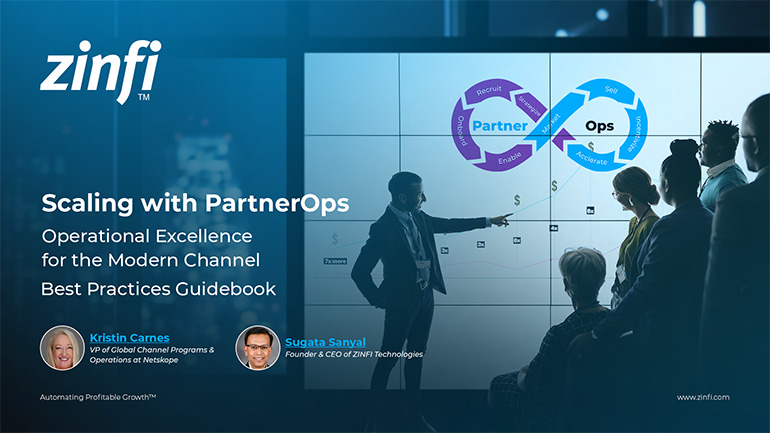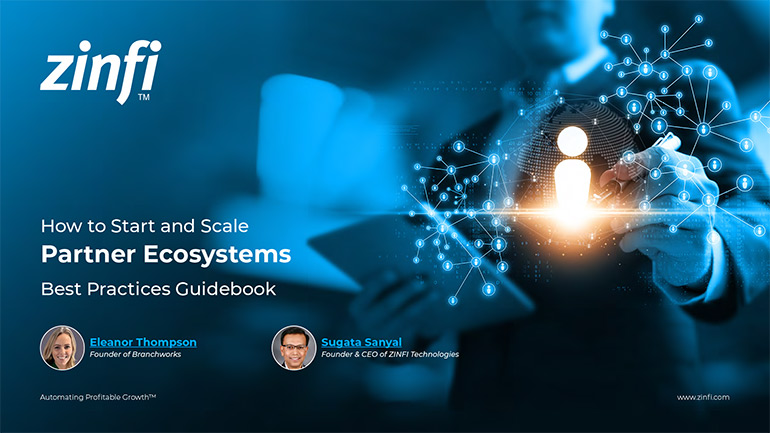Best Practices Articles

How to Build a Sales Partner Portal with Salesforce: A Step-by-Step Guide
Building a thriving partner ecosystem requires a strategic approach, beginning with creating a Sales Partner Portal with Salesforce. This initial phase is crucial for organizations aiming to manage partner relationships effectively while controlling costs. By leveraging your existing Salesforce CRM, you can create a primary partner portal as the foundation for a growing ecosystem. This article will guide you through developing a Sales Partner Portal with Salesforce, emphasizing the importance of a well-defined business proposition, partner recruitment, and the effective use of Salesforce tools to manage partner relationships. By focusing on these critical areas, you can build a robust partner ecosystem that drives growth and long-term success.
Key Takeaways:
- Discovering a Business Proposition for Your Sales Partner Portal with Salesforce: The foundation of any Sales Partner Portal with Salesforce is a well-defined business proposition that attracts potential partners. This proposition must clearly articulate the benefits of partnering with your organization. Questions to answer include: What value will the partner gain? How will this partnership help them grow their business? Why should they choose your company over competitors? Addressing these questions lays the groundwork for a flourishing partner ecosystem.
Understanding market needs is the first step in crafting a compelling business proposition. Conducting thorough market analysis helps identify gaps where your product or service can add significant value. By analyzing the competitive landscape, you can position your offerings uniquely, whether through superior technology, innovative features, or exceptional customer support.
Once you've understood the market, the next step is defining a clear value proposition for your Sales Partner Portal with Salesforce. Highlight specific benefits for partners, such as revenue-sharing opportunities, access to exclusive tools and resources, co-marketing opportunities, and enhanced customer support. A compelling value proposition is crucial in attracting and retaining partners, making them eager to engage with your Salesforce Partner Portal and explore further opportunities.
- Recruiting Partners for Your Sales Partner Portal with Salesforce: After defining your business proposition, the next step is to recruit partners for your Sales Partner Portal with Salesforce. Start with a small, targeted group of partners closely aligned with your business goals. These initial partners should add significant value to your ecosystem by reselling your products or providing complementary services. By carefully selecting your first partners, you can manage the launch of your Sales Partner Portal more effectively, making necessary adjustments before scaling up.
Partner recruitment should focus on organizations that are not only aligned with your business but also capable of effectively utilizing the Sales Partner Portal. This includes partners with a proven track record of success in similar ventures and those willing to collaborate and grow within your ecosystem. Choosing the right partners sets the stage for a thriving partner ecosystem where each member contributes to the collective success.
Additionally, offering incentives to encourage partners to join and remain active in your Salesforce Sales Partner Portal is essential. These incentives could include special pricing, access to premium resources, or co-marketing opportunities. By providing tangible benefits, you make your Sales Partner Portal Salesforce an attractive proposition for potential partners, increasing the likelihood of successful recruitment.

- Leveraging Salesforce for Sales Partner Portal Setup: In the early stages of partner ecosystem development, leveraging your existing CRM to create a Salesforce Partner Portal is cost-effective and efficient. This approach allows you to utilize tools and capabilities your organization is already familiar with, enabling quick implementation and easy management of partner relationships. Salesforce offers a robust set of features that can be customized to support partner management activities, making it an ideal choice for companies just starting to build their partner ecosystems.
A Sales Partner Portal with Salesforce allows you to manage essential partner functions, including partner list management, onboarding, deal registration, and sales tool distribution. These functionalities are crucial in the early stages of partner ecosystem development, as they provide the necessary infrastructure to support your initial partners while keeping costs under control.
Salesforce's flexibility makes it an ideal platform for scaling your Sales Partner Portal as your ecosystem grows. As your partner base expands, you can add more advanced features and integrate additional tools, ensuring your Salesforce Partner Portal evolves with your business needs.
- Managing Partner Lists and Onboarding with Salesforce: One of the most critical tasks in managing a partner ecosystem is creating and maintaining a comprehensive list of partners. Salesforce offers robust contact management features that allow you to store detailed information about each partner, including their contact details, partnership status, and activity history. This information is crucial for managing interactions with partners and ensuring they receive the support they need through the Sales Partner Portal.
Salesforce enables you to segment your partner list based on various criteria, such as geography, industry, or partnership level. This segmentation allows you to target specific groups of partners with tailored communication and support. For example, you can create separate campaigns for partners in different regions or industries, ensuring your messaging is relevant and practical.
Onboarding new partners is a critical process that sets the stage for their success within your ecosystem. Salesforce offers tools to automate and streamline the onboarding process within your Salesforce Partner Portal. Automated onboarding workflows guide partners through the necessary steps, such as sending welcome emails, providing access to training materials, and granting permission to use specific tools and resources. Automation ensures consistency and that all partners receive the same level of support, facilitating their quick adaptation to the Salesforce Partner Portal.
Salesforce’s Learning Management System (LMS) can also deliver training programs and certifications to new partners. These programs equip partners with the knowledge and skills to represent your brand and sell your products effectively. Certifications add a layer of credibility, helping partners build trust with their customers and ensuring they fully leverage the capabilities of the Salesforce Partner Portal.
- Sales Partner Portal for Deal Registration, Sales Tools, and Reporting: Managing deals effectively is crucial to partner management. Salesforce offers a range of features that make it easy for partners to register deals and track their progress through the sales pipeline. A well-structured deal registration process within the Sales Partner Portal ensures that partners can quickly move from identifying opportunities to closing sales.
Salesforce allows you to create custom deal registration forms for partners to submit new sales opportunities directly through the Sales Partner Portal. These forms can be tailored to capture all necessary information, ensuring your team has the details to evaluate and approve deals. By streamlining the deal registration process, Salesforce helps partners act quickly and efficiently, maximizing their chances of success.
Approval workflows in Salesforce further enhance the deal management process. These workflows ensure that deals are reviewed promptly and assigned to the appropriate team members. Customizable approval stages and conditional routing based on deal size or partner status help ensure that deals are handled efficiently, reducing bottlenecks and speeding up the sales cycle.
Salesforce’s sales tools and content management capabilities are vital for supporting your partners. The Sales Partner Portal with Salesforce can house a centralized library where partners access sales materials, product information, marketing collateral, and other resources. Regular updates to the content library ensure that partners have the latest information, empowering them to close deals more effectively.
Salesforce Configure, Price, Quote (CPQ) is another powerful tool that helps partners create accurate and customized customer quotes. CPQ automates the quoting process, reducing the risk of errors and speeding up the sales cycle. By integrating CPQ into your Sales Partner Portal, you empower partners to deliver consistent and competitive pricing, further enhancing their ability to succeed.
Effective partner management requires a robust reporting and analytics infrastructure. Salesforce provides tools to monitor partner performance, track key metrics, and make data-driven decisions. Customizable dashboards in Salesforce visually represent Key Performance Indicators (KPIs) related to your partner ecosystem, helping you and your partners stay informed and aligned on goals. Real-time reporting ensures that partners can access up-to-date information, enabling them to make informed decisions and adjust their strategies as needed.

Key Examples:
- Automotive Manufacturing: An automotive parts supplier could use a Sales Partner Portal with Salesforce to manage relationships with dealerships, track sales opportunities, and provide training on new product lines. The portal could offer real-time reporting on sales performance, enabling the supplier to support dealers more effectively.
- Consumer Electronics: A consumer electronics brand might leverage a Sales Partner Portal with Salesforce to create a centralized hub where retailers can access marketing materials, register deals, and receive training on product features and selling strategies.
- Energy Production: Energy companies could use a Sales Partner Portal to manage relationships with installation partners, ensuring they can access the latest product specifications and sales tools. The portal could also streamline deal registration and approval processes, improving efficiency.
- Financial Services: Financial firms might utilize a Sales Partner Portal to streamline the onboarding process for new financial advisors, offering training and certification programs through a self-service portal and tracking their performance with real-time reporting tools.
- Healthcare Services: Healthcare providers could use a Sales Partner Portal to manage partnerships with clinics and hospitals, ensuring consistent communication and access to patient care resources while tracking referral activities and outcomes.
Conclusion:
Creating a Sales Partner Portal with Salesforce is essential to building a thriving partner ecosystem. By leveraging your existing Salesforce CRM, you can develop a primary partner portal that provides the necessary tools and resources to support your initial partners while controlling costs. This portal will enable you to manage partner lists, streamline onboarding, facilitate deal registration, and provide access to critical sales tools.
As your partner ecosystem grows, the limitations of an essential Sales Partner Portal may lead you to explore more comprehensive Partner Relationship Management (PRM) systems, like ZINFI’s Unified Management Platform (UPM). These advanced platforms offer complete lifecycle management and seamless integration with existing infrastructure, providing the scalability needed to support a growing ecosystem.
By starting with a strong foundation in a Sales Partner Portal, you position your partner ecosystem for long-term success. The strategies and tools discussed in this article offer a roadmap for effectively managing partner relationships and ensuring that your ecosystem is well-equipped to drive business growth. As you progress through the later phases, you can build on this foundation to create a fully integrated and scalable partner ecosystem that delivers sustained value for your organization and partners.
Associated How-To Concepts:
- How to Enhance Partner Engagement with Customizable Salesforce Dashboards
- How to Optimize Sales Tools in Your Salesforce Partner Portal for Better Performance
- How to Transition from Salesforce Partner Portal to a Comprehensive PRM System
Sales Partner Portal Setup with Salesforce Checklist
- Define Partner Value Proposition
- Segment and Target Potential Partners
- Create Automated Onboarding Workflows within Salesforce
- Develop and Integrate Salesforce CPQ for Accurate Quoting
- Set Up Real-Time Reporting Dashboards for Partner Performance
Best Practices Guidebook
 The Channel Sales Playbook: Skills, Strategy, and Growth
The Channel Sales Playbook: Skills, Strategy, and GrowthDownload for FREE
 Blueprints for Vertical Success Best Practices
Blueprints for Vertical Success Best PracticesDownload for FREE
 The Future of Partner Enablement: From Enablement Gaps to Global Advantage
The Future of Partner Enablement: From Enablement Gaps to Global AdvantageDownload for FREE
 Reimagine Sales Development. Build a Smarter Prospecting Engine
Reimagine Sales Development. Build a Smarter Prospecting EngineDownload for FREE
 The Zero Trust Imperative: Fortifying Enterprise Security Against AI-Driven Threats
The Zero Trust Imperative: Fortifying Enterprise Security Against AI-Driven ThreatsDownload for FREE
 PartnerOps Excellence: The Definitive Guide to Scalable SaaS Ecosystems
PartnerOps Excellence: The Definitive Guide to Scalable SaaS EcosystemsDownload for FREE
 The Modern Partner Ecosystem Best Practices
The Modern Partner Ecosystem Best PracticesDownload for FREE
 Partner Marketing Reimagined: Strategies for Agile, Insight-Led Growth
Partner Marketing Reimagined: Strategies for Agile, Insight-Led GrowthDownload for FREE
 Scaling with PartnerOps Best Pratices
Scaling with PartnerOps Best PraticesDownload for FREE
 Leading with Partner Programs Best Pratices
Leading with Partner Programs Best PraticesDownload for FREE
 The Partner-First Blueprint: Scaling Trust, Intelligence, and Ecosystem Growth
The Partner-First Blueprint: Scaling Trust, Intelligence, and Ecosystem GrowthDownload for FREE
 Unlock Scalable Growth with The Partner Marketing Growth Blueprint
Unlock Scalable Growth with The Partner Marketing Growth BlueprintDownload for FREE
 From TikTok to LinkedIn: Social Selling Across the Generational Divide
From TikTok to LinkedIn: Social Selling Across the Generational DivideDownload for FREE
 Scaling Partner Ecosystems: From Enablement to Intelligence
Scaling Partner Ecosystems: From Enablement to IntelligenceDownload for FREE
 The Ultimate Guide to Partner Marketing Success Best Practices
The Ultimate Guide to Partner Marketing Success Best PracticesDownload for FREE
 How to Start and Scale Partner Ecosystems Best Practices
How to Start and Scale Partner Ecosystems Best PracticesDownload for FREE
 The Evolution of PartnerOps: Past, Present & Future Best Practices
The Evolution of PartnerOps: Past, Present & Future Best PracticesDownload for FREE







